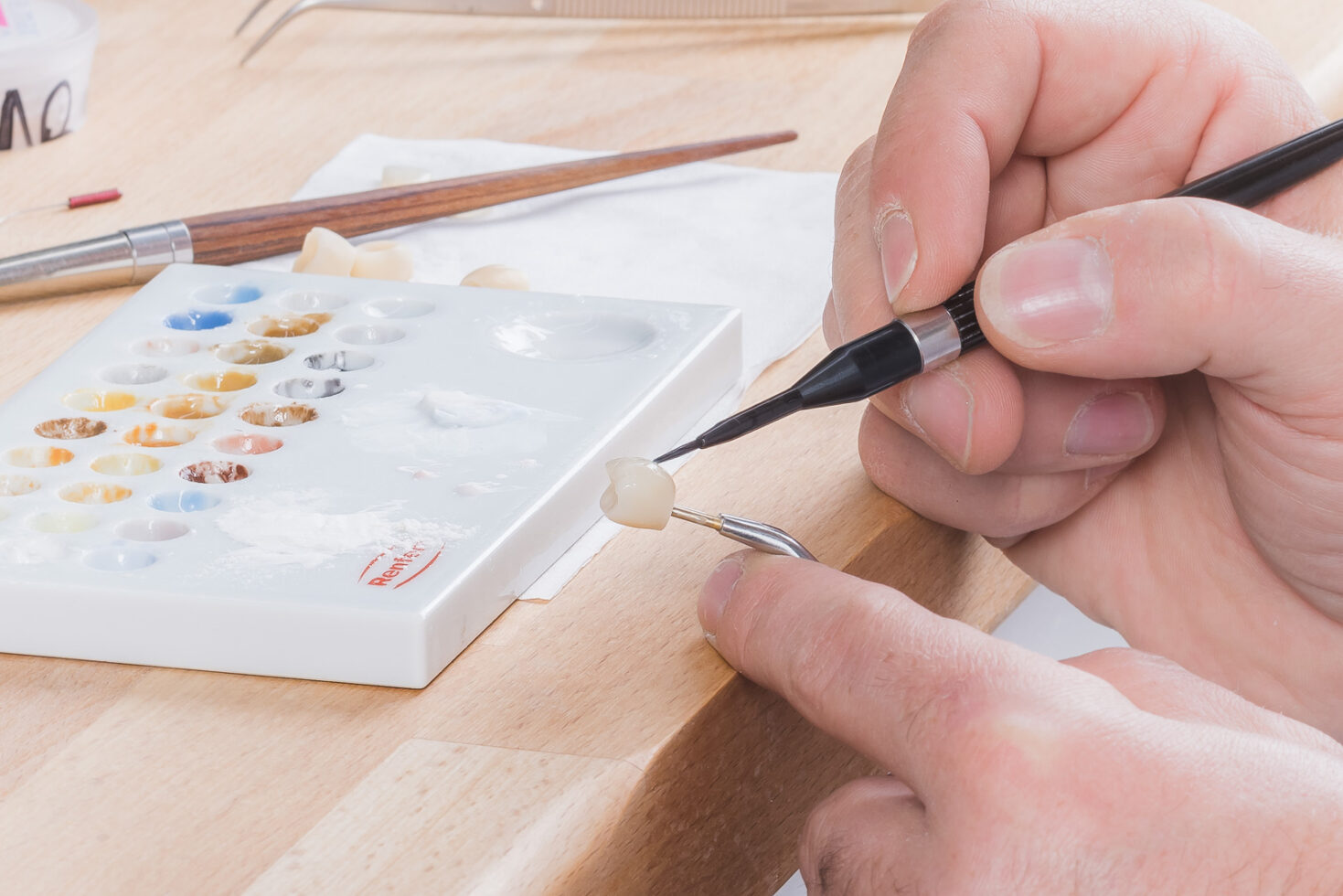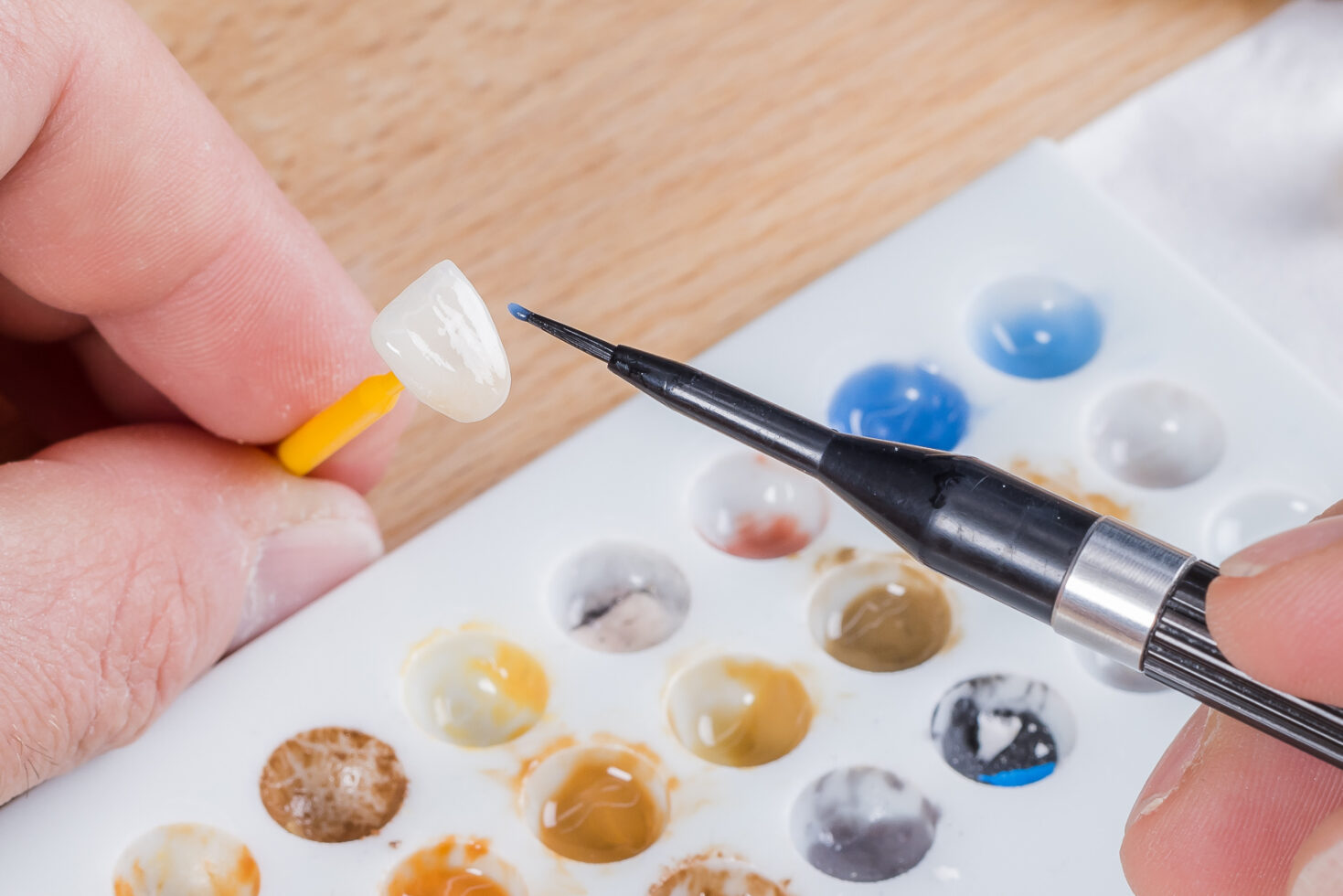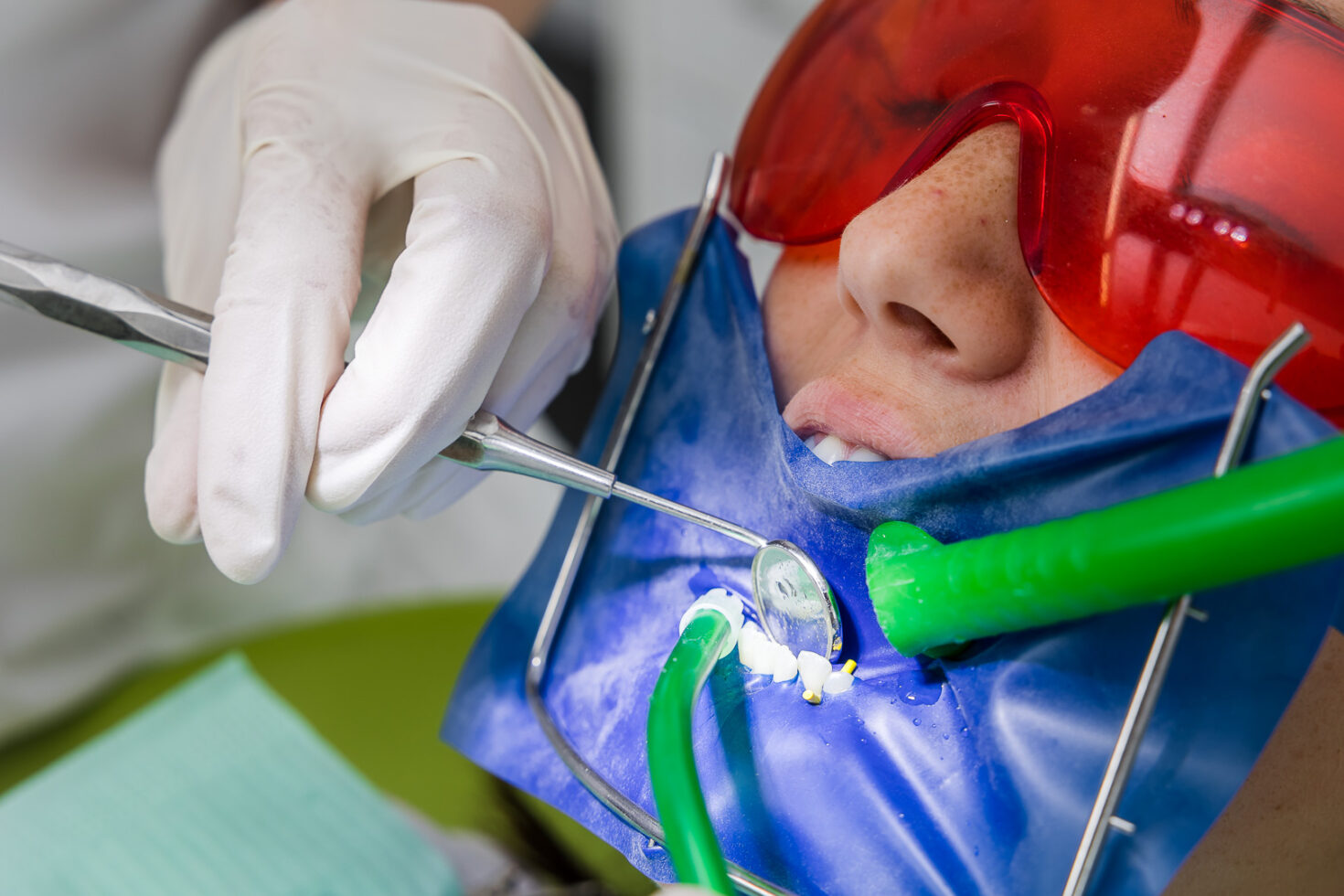Dental implants: comfort & aesthetics
Replacing a missing tooth with a dental implant offers major advantages in terms of health, comfort and aesthetics. In our Adent Dental Clinics, you benefit from the expertise of our implant dentists, coupled with the quality of Straumann® brand Swiss dental implants, with which we work exclusively.
We have dental laboratories on our premises, enabling a privileged relationship between patient, dentist and dental technician, and the creation of dental implants and prostheses of “Swiss Made” aesthetic excellence.
At the cutting edge of technology
The Adent Group has state-of-the-art intra-oral scanners for its clinics, as well as a milling machine for the in-house laboratory. The intra-oral scanners and the milling machine complement each other, revolutionizing the production chain for dental prostheses such as dentures, dental crowns and inlays.
FAQ – Implants and restorations
What is a dental implant?
A dental implant is an artificial root – a kind of screw made of titanium, zirconia or polymer – inserted into your jawbone. Fixed in this way, the implant (screw) replaces the root of the missing or missing tooth. The implant serves as an attachment for a dental crown or prosthesis. For wearers of full dentures, the implant stabilizes and considerably improves living comfort. In fact, the dental implant offers optimum hold for a lower prosthesis and removes plaque from the palate for the upper prosthesis, rediscovering flavors.
The same dental implant can also change function over the course of a lifetime: initially, it may serve as a support for a dental crown, then become the attachment for a mobile prosthesis later on.
Who should consider a dental implant?
Dental implants are suitable for anyone with missing or missing teeth who has sufficient jawbone to support the implant. Good quality and quantity of jawbone is one of the main prerequisites for dental implant placement. Good general health is also essential, and much more so than age. Dental implant placement may be contraindicated in certain cases of chronic disease. For further information, please contact our implantologists.
How long does the treatment last?
The total treatment time for a dental implant depends on many factors. The following information is therefore provided for information purposes only.
In practice, implant placement and healing take an average of 3 to 6 months. Once the implant has healed, the final crown or denture can be fabricated. The waiting period varies according to the complexity of each case.
How much does a dental implant cost?
The price of a dental implant depends on many factors. To draw up an estimate, the implantologist needs to meet with you and find out about your current oral condition, in order to define the precise cost of dental implant placement. Dental treatments to be carried out prior to installation should also be taken into account (e.g. treatment of tooth decay or gum inflammation). To determine the price, it is therefore essential that the dentist performs a preliminary oral examination to assess dental care, the feasibility of the installation and provide you with a detailed estimate. So it’s always important to be able to talk to your dentist face-to-face and ask any questions you may have about your future dental surgery.
If you’d like more information, make an appointment with a specialist at a dental clinic near you.
Available techniques in detail
1. The crown – Replace your tooth aesthetically, comfortably and naturally
A crown is a ceramic dental prosthesis that replaces the visible part of the tooth when it has been severely damaged by decay or fracture. It protects the tooth from wear and tear, and can be used to cover an implant replacing a missing tooth. This dental veneer method avoids the need for complete tooth extraction, while improving the aesthetics and comfort of your smile. As part of the Adent Group’s commitment to quality, dental crowns are made by craftsmen from our dental laboratory. The work is tailor-made, and carried out in collaboration with the patient, the dentist and the dental technician.
2. The bridge – Restore oral function and a harmonious smile
A bridge is a dental prosthesis that replaces one or more missing teeth. It helps restore aesthetic appeal and comfort in the mouth. Dental bridge abutments are usually located on either side of the edentulous space, in the form of implants or milled teeth. The bridge rests on these pillars. It is fixed and cannot be removed. Good oral health is essential for the longevity of this dental prosthesis. Regular checks and descaling are required by professionals.
3. Veneers – A balanced smile with dental veneers
Enjoy a brighter, more attractive and permanently white smile with dental veneers. This technique is valid for :
- Tooth color correction (when tooth whitening is insufficient)
- Enamel defects
- Teeth that are worn, broken or too short
- Slight misalignment of teeth (small overlaps or gaps)
A dental veneer is a small, very thin but highly resistant ceramic shell that is attached to the front of the teeth. It comes in a predefined color to match your smile and covers the natural tooth. They are placed on the visible front teeth to correct their contour, color and size and improve the appearance of the smile. They are custom-made for optimum results, a natural look and, above all, longevity.
4. Composites – Minimal invasion for maximum effect
Composites are materials in paste or liquid form that enable invisible restorations of broken or worn teeth thanks to a multitude of shades.
Composites are frequently used in cosmetic dentistry, particularly for small to medium-sized restorations. In addition to their main aesthetic advantage, composites enable a filling to be made without having to remove a great deal of healthy tooth substance.
5. Onlays & Inlays – An alternative for large-scale work
Onlays and inlays are ideal alternatives to high-volume dental composites. Inlays and onlays are prosthetic pieces that are placed on the tooth to help rebuild a tooth that has suffered from oral hygiene problems, cavities or cracks. Unlike crowns, which require a root canal, onlays and inlays can be placed on living teeth. Inlays and onlays are particularly popular because they are highly aesthetic and enable the damaged part of the tooth to be identically restored.
Before fitting the inlays and onlays, the dentist cuts the tooth to be restored and then takes a dental impression. To guarantee the highest possible quality, restorations are custom-made in our Adent 3D laboratories and in our partner laboratories from a variety of materials, such as ceramic or a combination of composite and porcelain.
FAQ – Techniques available
The crown: How much does a crown cost?
The cost of a dental crown depends on its size and location. Consult your dentist for a thorough check-up and a precise estimate.
The bridge: Who is the bridge for?
Anyone who has lost one or more teeth can use a bridge to fill the missing space, unless contraindicated by the dentist.
Dental bridges repair damaged teeth or replace missing ones.
Dentures prevent the displacement, loosening and eventual loss of other teeth. Mastication is facilitated, promoting optimal digestion. The smile is harmonized.
The bridge: How long does the treatment last?
The total duration of treatment depends on a number of factors, which only your dentist can tell you about, depending on your oral situation (missing teeth, dental implants, etc.). Please consult one of our dentists for more information.
The bridge: How much does a bridge cost?
The price can only be fixed after a thorough check-up by one of our qualified dentists. He/she will provide a detailed estimate based on the treatment plan discussed.
Veneers: How much do dental veneers cost?
The price can only be fixed after a thorough check-up by one of our qualified dentists. He/she will provide a detailed estimate based on the treatment plan discussed. Don’t hesitate to consult one of our dentists to discuss your options.
Composites: How are composites used?
Since dental composite and adhesive are sensitive to humidity, the practitioner must take special measures to keep the intervention area dry. Sometimes a local anaesthetic is required to avoid pain. The dentist then applies an acid to roughen the tooth surface. He then applies a fluid or paste composite, which is cured using a curing light. Carving and polishing the tooth are the final phases.
Composites: How much does a composite filling cost?
The price depends on the size and surface of the composite to be applied. The need for X-rays or anesthesia also influences the cost. A thorough check-up by a dental practitioner is necessary to draw up an accurate estimate.
Onlays & Inlays: How much does an onlay or inlay cost?
Prices vary according to the size of the area to be treated. It can therefore only be set after a check-up with your dentist. Don’t hesitate to make an appointment with one of our dentists for an informative consultation.
Do you have any questions?
Contactez la clinique dentaire Adent la plus proche de chez vous.
Find my clinic





